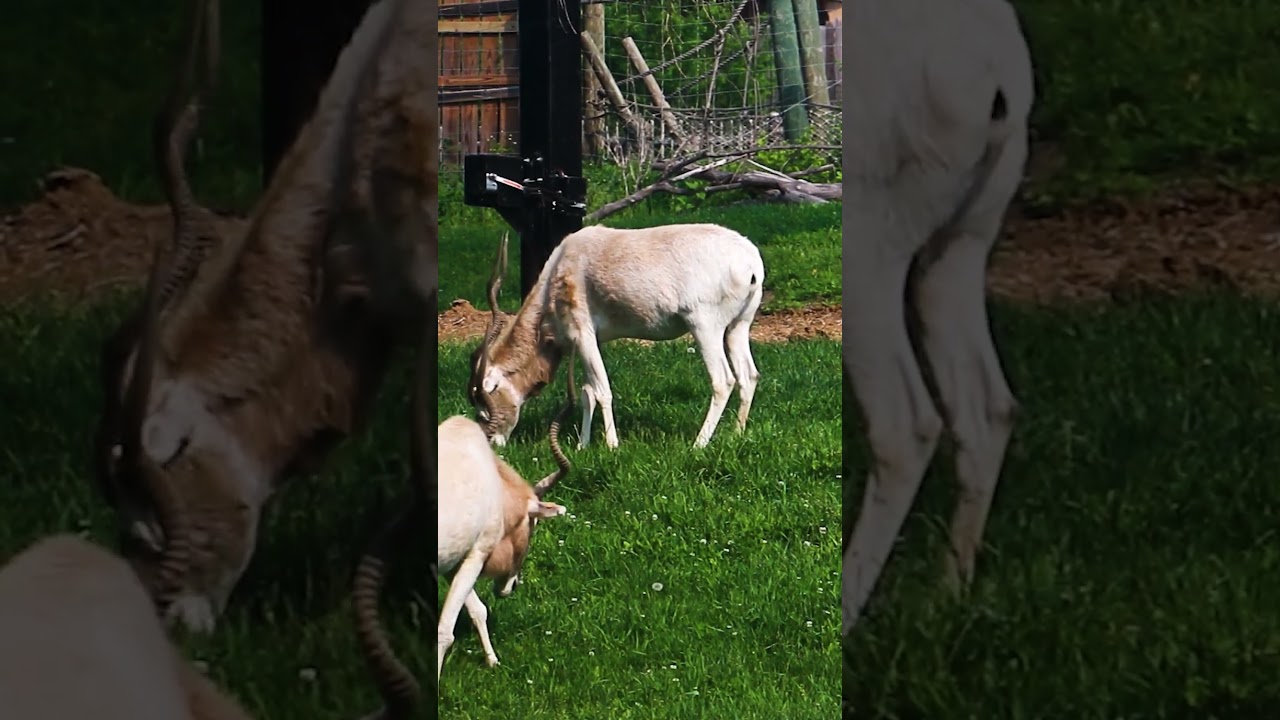Summary:
1. The Addax, a type of antelope, has unique adaptations to survive in harsh desert environments.
2. Grass is a food source and a comfortable resting place for Addax.
3. Addax is highly skilled at conserving water and can go for long periods without drinking.
4. The Addax’s ability to blend into its surroundings helps it evade predators in the wild.
5. Conservation efforts are crucial to protect the addax population and their natural habitat.
Grass isn’t only a great snack for Addax, but also a and
When we think of grass, the image that generally comes to mind is a lush green field extending as far as the eye can see. We associate grass with picnics, soccer games, and leisurely walks. But did you know that for some anima dual purpose? Meet the ad for Some Animals Day, a remarkable species that finds both sustenance and solace in the blades of grass within their arid desert homes.
The Addax, scientifically known as Addax nasomaculatus, is a unique antelope species native to the Sahara Desert and the Sahel region of Africa. These magnificent creatures have a set of extraordinary adaptations that enable them to thrive in one of the harshest environments on Earth.
Many of us may be familiar with the Addax’s primary role in the ecosystem as grazers. They are true herbivores, surviving primarily on plants and grasses. But what sets the Addax apart is their ability to transform grass into nourishment and a comfortable resting place, acting as a natural mattress amidst the unforgiving desert sands.
The scorching headway’s scorching heat-treats to shaded areas; they seek respite from the relentless sun. But rather than simply seeking shelter, these antelopes cleverly use the available grass patches to rest and rejuvenate. They luxuriously lie on the soft blades of grass, absorbing the coolness of the Earth beneath them while finding solace in the gentle rustling sound that echoes with every gust of wind.
Aside from providing a cozy bed, grass is essential to Addax’s diet. These desert dwellers have developed impressive adaptations to obtain maximum sustenance from the limited resources available. The Addax’s jaw structure and teeth are perfectly designed for grazing, allowing them to efficiently extract nutrition from the tough and fibrous grasses that dominate their arid habitat.
As grazers, the Addax consume a car and consume grasses, young shoots, leaves, and occasionally, flowers. They have a specialized digestive system and plant material and extract nutrients efficiently. This adaptation enables them to survive in an environment where water and food are scarce, making them true desert specialists.
Water conservation is also a crucial aspect of the Addax’s survival strategy. In the face of chronic water scarcity, these resilient creatures exhibit impressive adaptations to minimize water loss. Addax can reabsorb their feces, reducing the amount of moisture lost in their waste. Moreover, they have remainder body temperatures, further minimizing water loss through evaporation.
Beyond their adaptations for sustenance and rest, the Addax possesses another awe-inspiring trait – camouflage. In the vast expanse of the desert landscape, blending seamlessly with the environment is essential for survival. The Addax’s sandy coat, flecked with spots, acts as a natural camouflage, allowing them to remain hidden from predators such as lions, hyenas, and cheetahs.
Their incredible ability to conceal themselves within their surroundings not only aids in evading predators but also enhances their hunting capabilities. By remaining inconspicuous, Addax can silently approach their prey, increasing their chances of a successful ambush. This stunning display of adaptation showcases Addax’s ingenious strategy for survival in the relentless desert.
Despite their remarkable adaptations, addax populations face numerous challenges in today’s world due to human encroachment, poaching, and climate change threatening their existence. As with many endangered species, conservation efforts are crucial to protect the Addax and their fragile desert ecosystem.
Zoos and dedicated conservation organizations play a vital role in safeguarding the future of the Addax. Through captive breeding programs and reintroduction initiatives, these institutions work to bolster addax populations and preserve their genetic diversity. Raising awareness about Addax’s unique adaptations and conservation needs can inspire individuals to contribute to their protection.
In conclusion, the grassy plains of the Sahara Desert hold a fascinating secret – the Addax’s affinity for grass as a source of sustenance and as a comforting bed. This extraordinary antelope species showcases remarkable adaptations, from their ability to extract maximum nutrients from grasses to their incredible camouflage skills. As we learn more about the Addax, we gain a deeper appreciation for the intricate interplay between animals and their environment, urging us to take action to protect these remarkable creatures for generations to come.
*****
Source Description
Grass isn’t only a great snack for Addax and a great bed.


